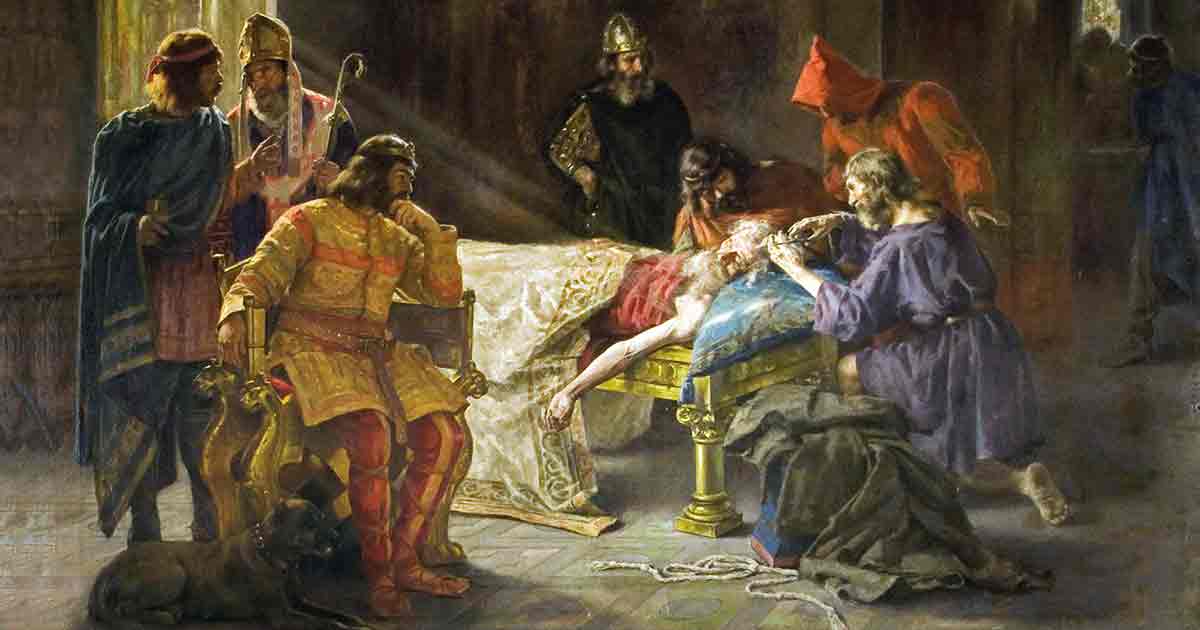King Wamba Lost the Throne When He Unwittingly Underwent a Tonsure
Within ancient history, tales of kings and rulers often contain unexpected twists and turns. Enter Wamba, the 7th century King of the Visigoths, whose reign is shrouded in a peculiar legend regarding his tonsured hair.
Wamba’s Triumphs and Turmoil in Visigothic Spain
Wamba was a Visigothic king who ruled from 672 to 680 AD during a tumultuous period in the Iberian Peninsula. His reign marked a time of both internal strife and external threats, as the Visigothic kingdom grappled with political instability and the encroachment of neighboring powers.
Throughout his reign, Wamba faced numerous challenges, including rebellions from disaffected nobles and incursions from external foes such as the Moors. Despite these challenges, Wamba implemented reforms aimed at strengthening royal authority and restoring order within the kingdom.
His efforts to consolidate power were significant, although ultimately he was deposed following a rebellion led by his adversaries, notably Erwig, a prominent nobleman who orchestrated the uprising and subsequently ascended to the Visigothic throne.
- African Slaves Used Braids to Communicate Escape Routes in Colombia
- Legendary Locks: Can Hair Act as a Sixth Sense, Protecting us from Danger?

Wamba renouncing the crown, by Juan Antonio Ribera. (Public domain)
The Legend of Wamba’s Tonsure and Loss of the Throne
Bizarrely, legend has it that Wamba's fate as king hinged on the state of his hair. Folklore has claimed that within Gothic law, it was stipulated that a king must have a full head of hair. Therefore, once a king's hair was cut in the style of a tonsure—meaning the shaving or cutting the hair on the scalp, typically in a specific pattern or style—he would be disqualified from ruling.
This peculiar decree led to a bizarre situation where Wamba's reign was allegedly threatened by the simple act of shaving his head, which was purportedly carried out by his adversaries during a rebellion led by Erwig, a prominent nobleman.
The legend of Wamba's tonsure is rooted in the cultural and legal traditions of the Visigoths, who had a complex system of laws and customs governing the conduct of their kings. While the exact origins of this law are unknown, it likely reflects the importance placed on physical appearance and symbolism.
During Wamba's reign, the Visigoth kingdom was beset by internal power struggles and external threats from neighboring kingdoms. The legend of Wamba's tonsure may have emerged as a reflection of the uncertainties and tensions of the time, with the king's physical appearance becoming a symbol of his legitimacy and authority.
Despite the legend surrounding his tonsure, Wamba is remembered as a capable ruler who sought to maintain stability and order in a challenging political landscape. While the veracity of the legend may be debated, this curious footnote serves as a fascinating glimpse into the complexities of ancient governance and the intersection of law, tradition, and superstition.
Top image: The tonsure of King Wamba, by Joan Brull Vinyoles circa 1894. Source: Public domain

















